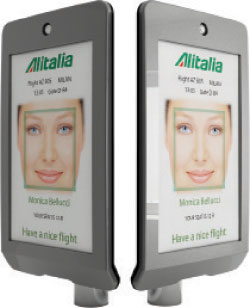
The ‘C-Gate’ solution responds to a need to establish that the identity of a passenger boarding the aircraft matches that of the person checking-in.
Airports opt for innovative IT solutions that safeguard the public, provide a state-of-the-art passenger experience and, more increasingly, to generate an important source of non-aeronautical revenues.
Demand for innovative technology from the check-in to boarding process is largely driven by a need to continually improve security at airports. The latest technology to catch the attention of airports is C-True Imaging’s facial recognition product, ‘C-Gate’, which builds on the success of its C-Entry system – used at border control to verify a passenger’s identity. ‘C-Gate’ responds to a need to establish that the identity of a passenger boarding the aircraft matches that of the person checking-in, explained Moty Grossman, C-True’s business development and marketing manager. “There is a big loophole in security because once you check-in, no one is sure who is boarding the plane. C-Gate is a breakthrough – it’s a 3D vertical solution that can enrol and authenticate you in less than a second using the new 2D barcode standard.”
C-True’s 3D vertical image scanning software is a leading development, recognising any skin colour and working in any lighting environment, Grossman added.
For passengers with an e-ticket or boarding pass, a facial scan is taken at check-in, during which C-Gate generates a template and attaches it to the scanned, bar coded-boarding pass. A second scan follows at the boarding gate – during which either a match is found on the database, or boarding is denied.
Bar code-enabled parking helps drive revenues
The role of bar coding in an airport parking scenario serves as an example of how new technology is also providing a flexible, value-added service for passengers, while boosting non-aeronautical revenues for airports.
Chauntry’s pre-booking systems interface with a car park management system to provide automated entry and exit for pre-bookers. According to managing director Theresa Hughes, Chauntry is still seeing a rise in parking sales, despite a drop in passengers passing the terminal.
In 2008, more than seven million bookings were made on Chauntry systems, which are active across the UK’s major airports, as well as many of the regional airports. Chauntry supports all forms of recognition technology to gain access to the airport car park, including ANPR, credit card and PIN access using a keypad.
“Our remit is to provide airports with tools that maximise their non-aero revenue streams. Pre-booked parking in the UK is generally offered at discounted rates. Combine this with the quick and easy automated entry and exit from the car park, it makes it a compelling proposition for the customer,” said Hughes.
Chauntry widely uses bar coded technology to improve the efficiency of the parking process. Passengers can book and pre-pay on the airport website before receiving instant confirmation on their phone via a bar code. They hold this up to the barrier when they arrive at their chosen car park. The barrier then automatically lifts and the customer parks and flies, explained Hughes.
The presence of automated number plate recognition (ANPR) technology is continually evolving, with credit card recognition for automated entry and exit into the car parks a common automated process in airport parking. However, with the advent of PCI standards governing the use of credit cards, credit card recognition technology may decline in popularity, Hughes added.
The car park pre-booking process also helps airports to increase revenues through direct contact with the customer, with opportunities to extend their services beyond parking. “It allows an airport to engage directly with their passengers, giving them opportunities to promote other services like fast track security, duty free purchases, or foreign currency.”
According to Hughes, integrating ANPR equipment with the reservation system appears to be the way technology is moving. “I think we are going to see an increase in ANPR solutions and this could make the automated barriers redundant. We have seen this technology effectively deployed in London for congestion charging.”







